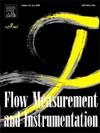Comparative efficiency and performance analysis of spur gear and non-circular (square) gear hydraulic pumps
IF 2.3
3区 工程技术
Q2 ENGINEERING, MECHANICAL
引用次数: 0
Abstract
This study addresses the comparative energy consumption performance of hydraulic spur gear pumps, whose technical features and efficiency are well-known, and non-circular (square) gear pumps, whose technical features and efficiency have not been sufficiently investigated, under the same operating conditions. The study encompasses both theoretical and experimental analyses. In the theoretical section, the design process of the square gear pump, the creation of gear geometry, its operating principles, and potential advantages are explained in detail. At this stage, physical prototypes were developed using CAD models and rapid manufacturing techniques, and their functionality was verified. Thus, the volumetric flow rate, operating pressure, hydraulic oil temperature variations, and power consumption at different speeds of the gear pumps were experimentally analyzed and evaluated in detail. The findings indicate that, at the same speed and within the same time unit, the square gear pump consumed approximately 0.59 %–33.94 % less power (kW) per unit flow rate and 8.08 %–74.33 % less power per unit pressure compared to the spur gear pump. These results reveal that the square gear pump consumes less power than the spur gear pump. Furthermore, the square gear pump demonstrated higher fluid transport capacity and operating pressure during operation. These results indicate that the square gear pump offers a promising alternative for industrial applications, combining high efficiency with low power consumption.
求助全文
约1分钟内获得全文
求助全文
来源期刊

Flow Measurement and Instrumentation
工程技术-工程:机械
CiteScore
4.30
自引率
13.60%
发文量
123
审稿时长
6 months
期刊介绍:
Flow Measurement and Instrumentation is dedicated to disseminating the latest research results on all aspects of flow measurement, in both closed conduits and open channels. The design of flow measurement systems involves a wide variety of multidisciplinary activities including modelling the flow sensor, the fluid flow and the sensor/fluid interactions through the use of computation techniques; the development of advanced transducer systems and their associated signal processing and the laboratory and field assessment of the overall system under ideal and disturbed conditions.
FMI is the essential forum for critical information exchange, and contributions are particularly encouraged in the following areas of interest:
Modelling: the application of mathematical and computational modelling to the interaction of fluid dynamics with flowmeters, including flowmeter behaviour, improved flowmeter design and installation problems. Application of CAD/CAE techniques to flowmeter modelling are eligible.
Design and development: the detailed design of the flowmeter head and/or signal processing aspects of novel flowmeters. Emphasis is given to papers identifying new sensor configurations, multisensor flow measurement systems, non-intrusive flow metering techniques and the application of microelectronic techniques in smart or intelligent systems.
Calibration techniques: including descriptions of new or existing calibration facilities and techniques, calibration data from different flowmeter types, and calibration intercomparison data from different laboratories.
Installation effect data: dealing with the effects of non-ideal flow conditions on flowmeters. Papers combining a theoretical understanding of flowmeter behaviour with experimental work are particularly welcome.
 求助内容:
求助内容: 应助结果提醒方式:
应助结果提醒方式:


